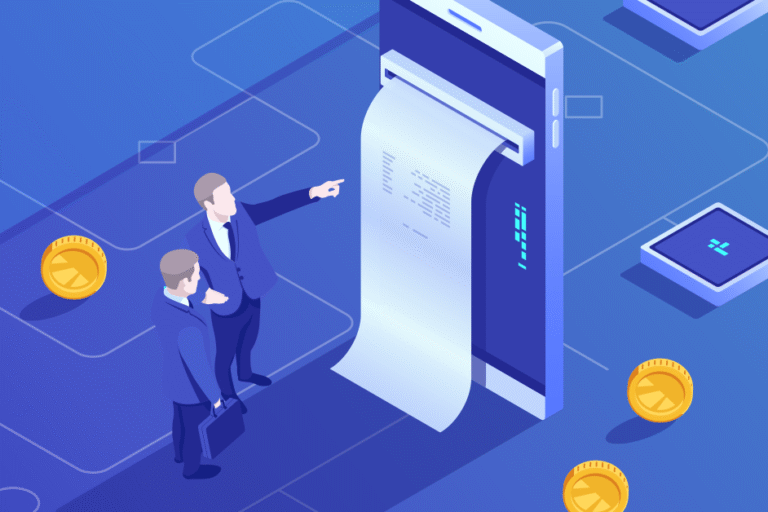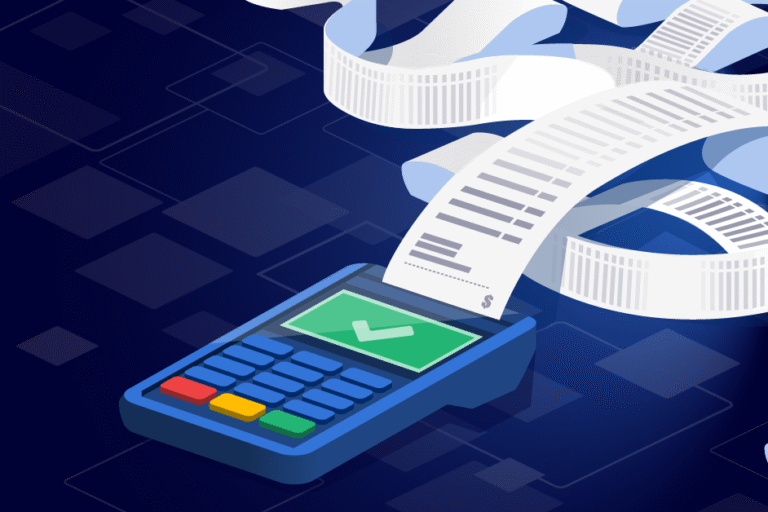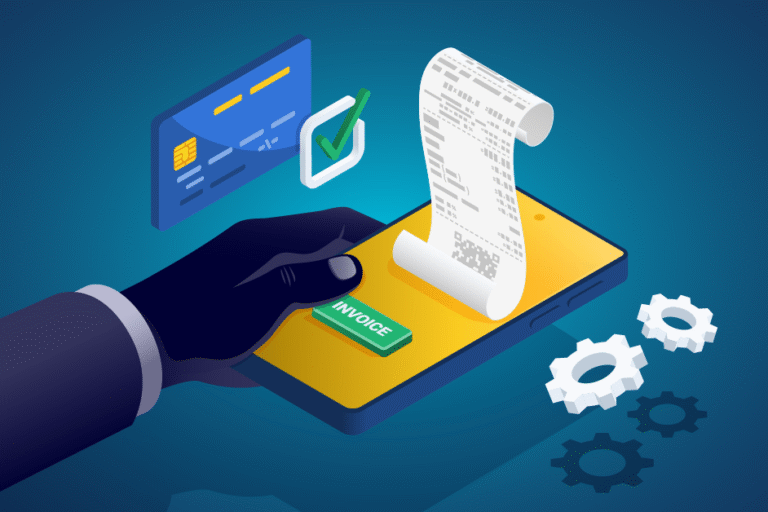
The Ultimate Guide to Evergreen Payments for Law Firms
04/10/2019 By Bill4Time Staff
Cash-poor businesses.
A postmortem analysis by CB Insights listed “ran out of cash” as the second most common reason for business failure. While it’s typically a problem for startups and new firms, it’s also a problem for established law firms.
I’m talking about feast or famine.
One minute your firm is awash with clients and projects. You’re scrambling to keep up with the demand, to serve your clients well. The next minute it feels like your firm is starving. It’s stressful and difficult to grow your firm under these conditions.
There is one major cause that’s often ignored.
Financial highs and lows = a lack of structure?
I’m not talking about the financial highs and lows that come with attracting or losing a major client. I’m also not talking about the one-off events that occur when your firm is in transition or your financial situation is undergoing a major change.
I’m talking about firms that are constantly in flux.
When I use the term “in flux” I’m talking about a specific set of financial circumstances that plague law firms.
- A decreased ability to consistently attract new clients
- Clients who frequently forget to pay their bills on time (or at all)
- A decreased ability to attract additional work or referrals from “promoter” clients
- A payment structure or building model that rewards bad behavior (e.g. discounts or write-downs if clients pay your invoice early or on time)
- Lost income due to a missed billing cycle (e.g. forgot to send your invoice to clients)
- Forgetting to follow up with clients who refuse to pay or pay on time
- Consistently experiencing a cash flow crunch
What’s the common thread here?
There are several details that immediately spring to mind. Poor timekeeping, unclear billing policies and procedures, a failure to send out invoices, etc. A lack of financial structure contributes to these firm killing problems.
Evergreen payments: the key to healthy cash flow
Definitions are important so let’s begin with the basics. When I use the word cash flow this is what I’m talking about.
I’m going to assume you already know this. My goal here isn’t to insult your intelligence but to ensure that we’re all singing from the same song sheet.
Cash inflow good, cash flow crunch bad.
This is precisely why you need evergreen payments. Evergreen payments simplifies the cash flow management process (a bit) for law firms. If you have a system that maintains good cash inflows (e.g. consistent, reliable and growing) your job is really only focused on one specific area.
Maintaining/decreasing expenses.
Evergreen/recurring payments make this possible for a few important reasons. When used appropriately, this makes feast and famine cycles a thing of the past. Let’s review the obvious and commonly cited reasons.
- More predictable cash flow. You and your clients settle into a routine. You bill at a specific time each month, often with a predetermined budget or range. Clients pay you automatically at a set time each month. You’re able to replenish your evergreen retainer or receive your next payment (recurring payments) at set intervals with little to no resistance from your clients, even if you’re unaware of the total cost. This decreases the likelihood that your firm will lose money.
- Decreased collections activity. If you’re a business-to-consumer or small business attorney, ePayments are a great way to decrease your collections activity and get you paid up to 70% faster. Bill4Time Payments is a built-in payments processors that allows you to offer secure, compliant ePayments to your clients. The low cost processor is built-in to your Bill4Time account and easy to activate.
- Value-driven client relationships. A financial routine shifts everyone’s attention to the value and outcomes received by the client. A recurring payment plan reduces the attention placed on the bills and payment. Yes, clients will still be focused on their bill which, as you’ll soon see, is important for consumption. A recurring bill means their balance will be broken up into small, bite-sized pieces clients can manage.
- Law firms become scalable. A payment plan gives your firm a certain amount of predictability. This is crucial for firm growth. The more predictable your receivables, the easier it is for your firm to raise capital (in the form of loans or equity), attract partners and grow your firm.
You’re probably already familiar with these benefits. Even if you aren’t, it’s not all that hard to figure out, am I right? Here’s the thing about these benefits. They’re obvious but they’re not the most valuable part of a recurring payment plan.
Okay then, what is?
As I mentioned previously, the most important components sidestep money altogether. Let’s review a few of the wildly profitable but hidden benefits of evergreen/recurring payments.
Hidden benefit #1: Clients are trained properly
The attorney/client relationship bears a striking resemblance to a parent/child relationship. Your clients are in a vulnerable position. They’re trusting you to advocate for and champion their interests. Evergreen/recurring payment plans train your clients to behave appropriately. It maximizes your client’s focus on value and minimizes their focus on price (which you don’t want to eliminate).
You can do this in several ways:
- Offer clients a set price or billing structure that’s easy to follow (good)
- Provide clients with a recurring payment schedule for their matter (better)
- Bill, invoice and receive payments automatically via credit card or ACH at set, predetermined intervals (best)
As a result, clients are trained to:
- Spend more money
- Request more ongoing work from your firm
- Stay engaged in the process
- Communicate openly and concisely with you
You provide your clients with statements verifying the amounts they’ve already paid. Notice, you’re not asking for permission, you’re providing a summary or accounting for a decision already made.
This is the key distinction.
This requires that you work to build more trust upfront during your intake process but it’s well worth it as you’ll see with the next benefit.
What if you don’t? What if you ignore client payment delays?
- Allow clients to pay late without penalty and they’re likely to do it again (and again)
- You (severely) diminish client loyalty (if they won’t stand up for themselves there’s no way they’ll stand up for me…)
- You’ll experience a cash flow crunch as feast and famine cycles become the norm
You won’t be able to train your clients properly until you know why they’ve stopped paying. Here are a few of the most common reasons for nonpayment.
- A cash flow crunch of their own: Clients with financial problems are understandably hesitant to pay. These clients fully intend to pay you but they lack the financial resources to do so. Being paid is important, maintaining their habit is more important. You want to ensure your clients send you something each and every month. This may require that you provide them with less until they’re fully caught up. It may also require modifying representation. What’s most important? Treating your clients as allies, never as an adversary.
- Unhappy or dissatisfied clients: Your client realizes their case/matter won’t be resolved in their favor so they decide to stop paying you. It makes sense in their head. Why would they continue to pay you if they’re going to lose and be forced to pay the other side? An evergreen/recurring payment plan helps to circumvent this issue. It positions you and your client on the same team. Remember, clients, are more likely to use what they pay for. The more they consume the more they buy. The more they buy the more they trust. You’ll be able to earn more fees from evergreen clients who are focused on value rather than cost.
- Large corporations: Large corporations have their own set of billing guidelines, payment schedules and hidden requirements that need to be followed to the letter. Fail to do so and you may trigger a billing dispute delaying payment. If you’re dealing with unexpected news pick up the phone and call your client. Create a map of expectations ahead of time. You’ll want to outline the explicit and implicit expectations you’re dealing with.
- Clients who are unwilling to pay: These clients weasel their way into your firm with one goal in mind. To extract as much free/low-cost work as they can from you before they’re given the boot. These clients wreak havoc on firms as they make their exit. They leave negative reviews, burn bridges and destroy firm morale. It’s best to avoid these clients before they find a way into your firm. Ask for a larger upfront retainer (followed by regular and evergreen retainers or recurring payments).
Hidden benefit #2: Client loyalty + revenue goes up
Which client is more likely to stay? Richard a client who pays a $17,000 retainer or Geoffrey who pays $2,450 per mo ($29,400 annually)? Give up?
It’s Geoffrey.
Richard will feel a burning desire to get his money’s worth but the pain of his initial purchase (e.g. the potential for loss) will decrease with time. Geoffrey, on the other hand, will feel the need to get his money’s worth each and every month. He’ll ask you for more help, which will increase loyalty over time. Why?
It’s the psychology of consumption.
“The extent to which customers use the products they’ve paid for determines whether they will repeat the purchase.” John T. Gourville
The more your clients consume – the more engaged they are, the more questions they ask, the more assistance they require – the more likely they are to continue working with your firm. Here’s the interesting part of this research.
Cost drives consumption.
Do you want clients to spend more with your firm over time? To request your help with additional matters? To be more receptive and open to your suggestions – even if there’s a significant financial upside for you?
Of course you do!
It’s true, evergreen/recurring payments, don’t come with the strong upfront payment many attorneys prefer. They offer something better.
Predictability.
The sunk cost effect is the core driver of this
predictability. Your clients feel compelled to use the services they’ve paid
for to avoid feeling that they wasted their resources.
See for yourself.
Wait just a minute here!
Am I advocating that you use evergreen/recurring payments to manipulate clients, via the sunk cost effect, to keep them trapped in a relationship with you?
Absolutely not.
I’m stating something much worse.
I’m stating that your clients will use, rely on and manipulate the sunk cost effect themselves and that there’s not a thing you can do to stop them from doing so. Once they’re invested (financially) in your firm, and you’ve earned their buy-in with evergreen/recurring payments they’ll do it themselves.
Be careful.
The sunk cost bias increases in strength over time. The longer the relationship, the more money spent, the more your clients consume, the more reliant clients are on you – the more likely they are to continue paying for your help.
It’s your job to ensure your clients are treated well.
Hidden benefit #3: Circumvent client games
You know the one.
Your client feels their case/matter won’t be resolved in their favor so they decide to stop paying. Again, it makes sense in their head – why pay you and the other side if they’re going to lose? A recurring payment plan circumvents this issue.
- Clients spend less money upfront but pay regularly for your help
- If they fail to pay their recurring payment plan they could lose your support at an inconvenient, catastrophic or unpredictable moment. A recurring payment plan can also circumvent piecemeal billing, providing firms the structure and predictability they need to retain quality clients.
- Evergreen/recurring payment plans take advantage of the sunk cost bias. It’s a tendency people have to irrationally follow through on an activity that fails to meet their expectations due to the amount of time and/or money invested.
Hidden benefit #4: You (semi) productize your firm’s services
Productization requires specialization. If you’re a multi-purpose firm a recurring payment plan can work but it will also require a lot more work. Specialization with a few practice areas is key. If you focus exclusively on family, tax or intellectual property law you can productize your services using recurring payment plans as a delivery framework.
A recurring payment plan breaks your service/work into manageable financial pieces. Pieces your clients can afford to pay for.
Here’s a brief primer on that.
Did you catch that?
There are three types of productized services.
- The foot-in-the-door-offer. Irresistible introductory offers that are designed to attract client attention in hopes of securing an ongoing relationship with higher fees. This productized service is an excellent strategy to attract a consistent stream of B2B clients.
- One-time purchases. These purchases fulfill a client need but they also set the relationship up for upsells, cross-sells and down-sells. You’re not pitching clients irrelevant services they don’t want or need. You are piggybacking on your one-time offer, showing clients that an ongoing relationship would provide them with more value.
- Recurring retainers/subscriptions. Clients pay you for a value-added service on a weekly, monthly, quarterly or annual basis. This doesn’t have to be labor intensive work either. You can use evergreen retainers and subscription payments as a strategy to handle the tedious or routine work clients need done on a day-to-day basis.
Here’s a brief idea showing you how you can use a productized service to grow your firm.
Step #1: Set up your DBAs
You’ll want to verify that this is acceptable in your local jurisdiction. You’ll also want to notify your malpractice carrier of any pertinent changes. You can use your DBAs for a variety of purposes.
- Creating a low-cost brand that automates or semi-automates routine legal work (e.g. wills, basic trusts, agreements, etc.). This low-cost brand would be a helpful and cost-effective way to rapidly train new graduates/associates. It could also be a significant profit center for your firm.
- Creating a prestige brand that bills at a higher rate. This is perfect if your prestige brand only matches illustrious/valuable clients with law firm partners who have 20+ years of experience under their belt. It’s an ideal strategy if you’re looking to win larger contracts from well-paying corporate clients.
- Creating a volume brand that produces large amounts of high-quality work at reasonable, mid-market rates. This would be perfect for grinder associates were focused on churning out as much high-quality work as possible. It would also be ideal for the minders who manage them.
- Creating a specialist brand that focuses on specific practice areas or precise areas that require a tremendous amount of legal expertise. This is perfect if you’d like your firm to branch off into specialized practice areas (e.g. IP, tax or compliance law).
This quick bullet list isn’t comprehensive. It’s not intended to be. It’s designed to get you thinking about the ways you can use sperate brand identities (via DBAs) to create consistent and steady cash flow for your firm. It would require that you maintain a separate brand identity for each DBA (e.g. business cards, websites, social media, mailing addresses, etc.).
Why go to all this trouble?
Your brand stands for one specific thing in a customer’s mind. If we’re relying on the Pareto distribution, I know most attorneys receive 80 percent of their revenue from 20 percent of their practice areas.
Separate brand identities provide stability.
Practice areas that are viable today may not be as viable tomorrow. Properly used, brand identities via DBAs provide firms with the flexibility and financial stability they need to weather any economic storm.
Step #2: Create and set up payment terms
You’ll want to create the payment terms necessary for your firm whether you’re using DBAs or not. You’ll want to make sure evergreen retainers are stored appropriately in your trust account until their earned (obviously). It’s something you already know but it’s still surprising that so many attorneys miss this.
You can use evergreen retainers, recurring and subscription billing, fixed fees and other alternative fee arrangements, where appropriate, in your DBAs.
Again obvious, but worth repeating.
Next, you’ll want to avoid one of the biggest mistakes solo attorneys make when discussing fees with a prospective client.
Assuming your client understands.
You want to lay out the terms of your evergreen retainer clearly, so your clients understand it, ahead of time. You’ll want to verify (without being condescending) that your clients understand.
They should know:
- When evergreen retainers will be replenished (e.g. triggered by schedule or dollar amounts)
- What happens if they fail to pay for/replenish their retainer (e.g. work stops, withdraw representation)
- The late fees and penalties associated with their failure/inability to pay
- That you’ve made a good-faith effort to suss out any questions, objections, fears or concerns upfront
- What their options are if they object to any of the terms you laid out
What happens if clients reject the terms you laid out?
It’s simple.
You refer them to a DBA that will better serve their needs. If a low-cost client wanders into your prestige brand looking for help they may balk at the price. No worries, simply redirect them to your low-cost DBA.
Step #3: Get existing clients to switch
When it comes to switching there’s a hidden fear.
“Clients don’t want to switch. If I push too hard to leave or I’ll lose their business.”
Relationship is the antidote to this fear. Specifically two kinds of client relationships.
- Constrained relationships I have to stay in this relationship
- Dedicated relationships I want to stay in this relationship
Customers in a constrained relationship feel they have to stay to avoid losing the exclusive benefits there are currently receiving. They may also choose to stay to avoid the transitional pain and expense that comes with switching.
Here the main factors that impact your client’s psychological commitment to your firm.
- Sunk cost effect. Remember this? The more recent the spend, the more likely customers are to stay and consume. The more money they invest the more likely they are to stay. The more they consume now, the more they’ll consume in the future.
- Regret avoidance and loss aversion. It’s better to not lose $ than to gain $. When customers are satisfied, they tend to avoid doing things they feel they may regret; they stick with what they know and stay with the status quo to limit risk. The stronger your value proposition the greater the loss aversion.
- A desire to feel in control. Customers typically don’t have control over the outcome. As a result, they prefer to maintain control over their circumstance. Doing this helps them avoid the psychological pain that comes with uncertainty. Customers stay with the status quo to avoid losing control.
What about dedicated relationships? These customer relationships last longer because they’re self-sustaining. These clients develop emotional bonds with the associates/team handling their matter/project. It’s no surprise then that loyalty flows naturally from these client relationships. Which factors are most important to these relationships?
- Benevolence. Your clients feel a consistent sense of goodwill from you. The relationship isn’t adversarial it’s a healthy mix of partnership and caretaking.
- Integrity. Your clients see you’re focused on delivering value. You don’t nickel and dime your clients, you’re too busy delivering exceptional results on their behalf. Your clients know you’re honest, ethical and morally sound, whether they’re watching or not.
- Competence. You’re the best-of-breed, the finest your client can afford. You’re highly competent, you’re able to produce results other attorneys can’t or struggle to achieve.
This is how you get existing clients to switch to evergreen payments. You have a constrained, dedicated or combination (both) relationship with your clients.
Anything else is voluntary.
Want to increase the likelihood that your clients make the switch to evergreen or recurring payments? Give them a compelling reason.
- Create a compelling value proposition. Create a service/firm with an exclusive, compelling, credible and clear offer from your client’s perspective.
- Reverse or assume their risk. Find a way to eliminate, reduce or modify the risk to your clients. The risk to your client switching comes in two flavors (1.) the obvious risks (e.g. loss money, receive less attention) and (2.) the hidden risks (e.g. you’re overcharging me, this deal is predatory, etc.)
- Give them an out. Give your clients the opportunity (as much as possible) to say No. Provide them with a clear exit if they’re unwilling to continue with the current arrangement. Examples include upgrades, downgrades, renegotiation, and alternate DBAs.
This is how you get clients to switch.
The good news? It’s upfront work that pays dividends indefinitely. The bad news? It’s difficult, requires a fair bit of thinking and in the end, most firms give up before they’ve completed the process.
This is how you win.
Step #4: Manage your financial data
It’s a mistake to attempt to manage your financial data manually. There’s too much data to manage and not enough time to analyze it. With practice management software, you can manage evergreen payments on a recurring basis. You can set up alternative fee arrangements (e.g. subscriptions, fixed fee, contingency, holdbacks, etc.).
There’s something more important here.
It’s the data.
If you’re looking to get a decisive victory with your cash flow management you’ll need a significant amount of data. You’ll need a way to track these metrics comfortably. The easier it is, the easier it will be to grow your firm.
Verify that your software can do the following:
- Set up alerts: These alerts are automatic, alerting you to any potentially dangerous or problematic issues before they hit the point of no return.
- Schedule software: If you’re relying on practice management software, you’ll want to schedule reports so they’re run automatically, on a schedule, all the time. Get everything out of your head and into a trusted software system.
- Schedule people: Build a team of trusted, freelance/outsourced providers who can help you with the above list of metrics. If you’re doing amazing work (and I assume that you are), you won’t have the time you need to track all of this consistently. Surround yourself with software and people who can.
- Focus on accuracy: You’ll want to provide your people and software with the information and resources they need to perform. This means you’ll need to track your time accurately, record data in your software tools judiciously and focus on doing this consistently. Skip this step and your metrics won’t be accurate.
If you’re using practice management software you should be able to set evergreen and recurring payments up easily. You’ll want to ensure that you receive notifications or alerts when you retainer balance is low. Your practice management tool should also manage your trust accounts.
Financial highs and lows signal a lack of structure
New and established firms struggle with feast or famine cycles.
One minute your firm is awash with clients and projects. You’re scrambling to keep up with the demand, to serve your clients well. The next minute it feels like your firm is starving. It’s stressful and difficult to grow your firm under these conditions.
This doesn’t have to be you.
Most of these law firms exist in a constant state of flux. They struggle to receive payment from their clients. Their day-to-day cycle is a consistent source of stress and anxiety. Evergreen payments are the key to healthy cash flow.
Cash inflow good, cash flow crunch bad.
Evergreen payments provide firms with the predictable cash flow and decreased collections activity they need. These law firms become scalable, high-performance growth machines. They’re exceptional value generators for clients, employees and partners.
With strategy and evergreen/recurring payments, you’ll have the tools and resources you need to create the cash-rich, feast worthy law firm you deserve.




